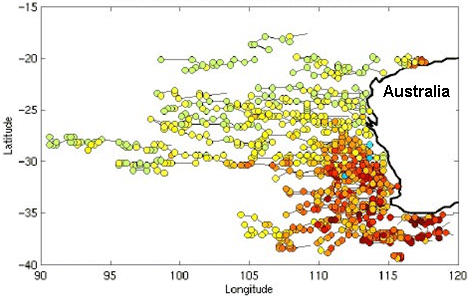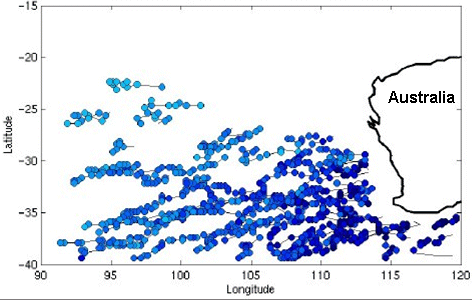Warm and cold eddies part ways
Image of the month - May 2005



At mid-latitudes, warm eddies go to the equator, cold ones to the pole! At least, between 25 to 40° of latitude, when other factors (bathymetry, strong currents) are not involved, eddies of more than 100 km in diameter tend to go toward the equator when they are anticyclonics (warm eddies, counter-clockwise in Southern hemisphere), and toward the pole when they are cyclonic (cold eddies) under Coriolis force effect.
This tendency, due to turbulences at the eddies' borders, could only be one of nature's oddities. In fact, such mechanisms are probably involved in heat and salinity transports in the ocean.
With a global, long-term view of the ocean (now more than twelve years available), altimetry allows to observe and understand little-known phenomenon.
See also:
- OST/ST 2004 meeting poster: Divergent pathways of anticyclonic and cyclonic eddies, R. Morrow et al. (pdf, 1.6 Mb)
References
- Morrow, R., F. Birol, D. Griffin, and J. Sudre (2004), Divergent pathways of cyclonic and anti-cyclonic ocean eddies, Geophys. Res. Lett., 31, L24311, doi:10.1029/2004GL020974.




